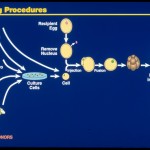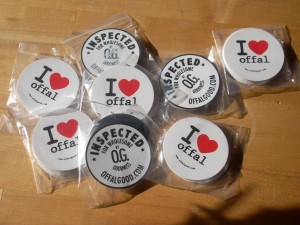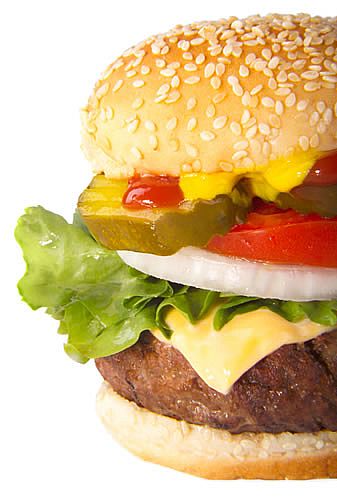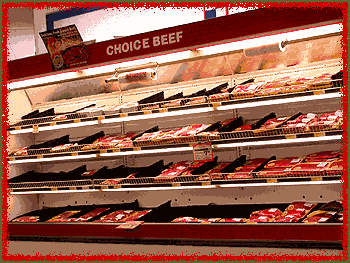If these are a must for you go to the shop and pick yourself up a few.
]]>]]>
Recently the article written by Mark Bittman, “Rethinking the meat guzzler”, in the New York Times last week and the article “Chefs new Goal: looking dinner in the eye”, also in the New York Times the week before have created a huge stir around the consumption of meat. There was an onslaught of people complaining, and writing letters to the Times, that no matter how the animal is raised killing it for food is still murder. A few months back I did a photo documentation of my experience of a humane animal practice and slaughter and I caught a bunch of shit when Ruhlman posted it on his site.
Here is a Washington post article that I received Wednesday morning from a friend in D.C. Just to top it all, the company that is treating these animals like this have the national school lunch program account. Trust me, my child won’t be eating this meat. This gives you a reason to find out where your animals are coming from. Well, for all of those who really don’t fucking get it, here is a very graphic video to open your blind eye to what we as chefs are trying to prevent.
I am no fucking saint. Yes, I slaughter animals, but I fully believe that the animal should be treated humanely, see the light of day and roam freely all the way to the end. Call me what you may but I would never treat any animal like this. At the restaurant we serve animals raised under Certified Humane standards.
Remember you asked for cheap meat this is how you are all getting to enjoy that fucking $1.00 hamburger, eat up and watch this.
]]>
This image gives a whole new meaning to shagging sheep.
Well folks, I guess we have truly reached the pinnacle of fucking stupidity. I cannot believe that the public knows what they are getting themselves into with this cloned meat program. It reminds me of when I was in high school and had to read Aldous B. Huxley’s, Brave New World and how the genetic order was pre-chosen for each person. Do we really need to do this with our meat? What will be the long term effects of this, why are they overriding natural selection that happened for a reason. Who knows what will happen to humans after eating this meat for years. There isn’t enough info in my opinion to back the safety of this huge leap of scientific faith. Come on people, wake up and smell how rancid this is! Read this article that is linked here in the Wall Street Journal. Please voice your opinions now, speak and contact your congressional representatives or write the FDA. This is a scary path to be taking. Be sure to know where your meat and milk are coming from now.
]]>
The Art of Having Guts
Lisa Cannizzaro
Writing In Psychology
Rhetoric and Composition 301
University of San Francisco
Abstract
Many Americans in today’s culture tend to despise any mention of offal. Offal comes from the term, “to off-fall” from the animal, also known as the fifth quarter. Eating offal has become a very taboo practice in American culture. Other countries such as France, Ireland, and England have embraced the unmentionable act of eating offal. What is ironic about the American view of offal is that Americans eat offal every day without even knowing it. Another aspect of offal is that when people only eat the filet cuts of meat, they waste the rest of the animal. In contrast, countries like France eat offal as a sign of respect to the animal for giving its life. Fast food and other contemporary means have disassociated people with the animals that they eat, and by eating offal, they gain a better understanding of where their food is coming from.
Introduction
People today have become far too disassociated with what they eat. Not many people can explain exactly what chicken nuggets are made of, except that some part of them is made from chicken. These types of ingredients sparked increasing curiosity when McDonalds tried to market chicken nuggets, announcing that they were now made with real white meat, leading the public to question what exactly was in them before. Society has now become rather impersonal with the food that they eat, and this disassociation has led to a strong dislike for foods such as offal. Offal, the term for the parts of the animal that, “off-fall” from the carcass after slaughter, has become a taboo style of eating, according to American culture (Arthur and Slatkin, 2007).
American Attitudes
Americans are disgusted by the idea of eating something that once belonged to an animal, unless that something is packaged in an appealing yellow Styrofoam casing at the supermarket. At one point in time, Americans did consume offal: “Before the Second World War, Americans consumed almost all of the offals produced;” however, “As the US economy expanded in the 1950s and 1960s, American women joined the work force in large numbers; most children of the baby boom did not experience the diverse and different taste of offals” (Hayes, 1989, p.634). In which case, Americans began to lose interest in offal because it required more preparation and culinary experience than other types of foods. From this point on, American society only became faster and faster, following the American motto, ‘smaller, cheaper, faster’.
Unknown to many Americans, even though they may not be able to stomach the mention of offal, they eat offal products every day. In an article by Dermot J. Hayes, (1989) he said that, “Much of the US consumption of [offal] products is head and cheek meat consumed in hot dogs and fat added to lean ground beef for hamburger production” (Hayes, 1989, p.637). As explained by Chef Chris Cosentino in a video by Arthur and Slatkin, (2007) offal is used in products like multi-vitamins because they contain creatin, which is most abundant in beef hearts. In which case, unless these multi-vitamins are made synthetically, then they are most likely made from beef hearts (Arthur and Slatkin, 2007). As described by Professor Greg Pabst, sausages may not only sometimes contain offal, but they are incased in offal as well since they are often times packaged with a, “natural casing,” which is normally pig intestines. Also on a sidenote, before latex was made, people used pig intestines as condoms in the times of the Renaissance (personal communication, December 3, 2007). People may think twice about their views on offal if they stopped to realize that some of the foods that they already eat, and enjoy, are actually made from offal cuts.
Some Americans are simply afraid of offal. Eating packaged meat products and socially acceptable cuts of meat put fearful minds at ease. In an article by Jeremy Strong, (2006) Margaret Visser clearly sums up this view: “But whereas ‘meat’ is reasonably imprecise and unconnected in our minds with specific body parts, the same cannot be said for eyes, testicles, ears or offal. The sight of these, especially when raw, is capable of arousing a shudder even in meat eaters” (Strong, 2006, p.30). In order to avoid this type of personal confrontation with the animal that they eat, they tend to favor the view that ‘ignorance is bliss’. If people are able to distance themselves into thinking that a muscular filet of meat might not be from an animal, then they feel more at ease with what they are eating and perhaps even less guilty. However, once people are faced with the concept of eating an animal that has a similar biological makeup to themselves, people become rather uneasy with what they are eating.
Even though many people may try to convince themselves that they are not really eating an animal, the reality of it is still there. Jeremy Strong (2006) best illustrated this point in a quote from Hattie Ellis:
I’ll watch a side of pork being divided into belly and loin on the scooped butcher’s block, or see where the chunks come for a stew. You can play the sequence in your mind of the animal turning into cuts and then rewind it, speeded it up, so the cuts leap back to become a whole again. The vegetarian may cringe, but to recognize that meat comes from an animal is to value it more, to give it respect. (Strong, 2006, p. 31)
Meat can come in a variety of dishes such as filet mignon, prime rib, hamburgers, bacon, etc. It may come in a tantalizing array of disguises to pretend as though the diner is not actually eating an animal, yet the truth of the matter is that they really are eating an animal. Once the diner has realized this, they come to have a better understanding of what it is they are eating, rather than trying to dismiss the slaughtered animal in front of them.
Respect for the Animal
Countries such as France have a far different culinary philosophy than Americans. Dr. Prion, a nutrition professor at the University of San Francisco, said that the French used offal quite frequently in their cooking as a sign of respect to the animal for giving its life (personal communication, November 14, 2007). Small-scale farmers share a similar belief as the French: “’Waste is not acceptable, it’s all or nothing’” (Strong, 2006, p.36). If people are willing to eat an animal that is killed, they should be willing to eat every bit of that animal because it unwillingly gave its life for consumption. The enthusiasm people show to waste offal cuts further exemplifies just how much people have become impersonal with the food that they eat. In a video by Arthur and Slatkin, (2007) Chef Chris Cosentino said that if people actually held an animal and slaughtered it themselves, they would have a much stronger desire to eat every ounce of that animal, otherwise they would feel incredibly guilty. It is not only selfish to waste offal cuts, but it also is rather unwise to do so. By simply eating the socially acceptable cuts of meat, people hugely limit themselves from a variety of new flavors and textures of meat (Arthur and Slatkin, 2007). Tom Philpott (2007) explained Henderson’s view on the limited use of meat: “It would seem disingenuous to the animal not to make the most of the whole beast: there is a set of delights, textural and flavorsome, that lie beyond the fillet” (Philpott, 2007, p.108). Granted there will be people who are ultimately opposed to ever trying offal, but those who are willing to try offal will be able to partake in a world full of new flavors, new dishes, and new gastronomical experiences.
The Slow Food Movement
In response to the closed-minded industry of fast-food, a movement known as the Slow Food movement emerged. The Slow Food group became very distraught at what they call Fast-Life. They do not want to be pressured by Fast-Life or Fast-Food, but they want to be able to enjoy the life that they have been blessed with. They believe in taking a step back from the rush of society that is determined to permeate into their lives. They are people who march to the rhythm of their own drum and not to the rhythm of society. Jones et al. (2003) explained that the people of the Slow Food movement start with their food; their goals are to, “protect the purveyors of fine food from the deluge of industrial standardization; to ensure the survival of endangered breeds, cheeses, cold cuts, cereals and fruit; to promulgate taste education; to make a stand against obsessive worrying about hygienic matters, which kill the specific character of many kinds of production and the right to pleasure” (Jones et al., 2003, p.299). The Slow Food movement promotes the belief in one’s own pace. This pace also enables a person to enjoy food to its fullest extent through fine foods that are considered taboo in today’s fast society.
Slow Food is also concerned with products that have been modified by use of biotechnology. With this new biotechnology, more and more products will be genetically engineered, thus posing a threat to traditional plants and crops. One of the major problems with food that is created using biotechnology is that it will not have the same type of flavor that many people are already used to in natural products such as eggs, cured meats, cheese etc. Jones et al. (2003) claimed that,
The argument here is that over the centuries the enormous wealth and variety of local products have determined a gustatory referential framework that is a fundamental part of the traditional model of eating and the pleasure which people derive from the consumption of food and drink and that any changes to this framework may provoke extremely negative psychological and social consequences. (Jones et al., 2003, p.301)
Changes in society, such as genetically engineered food, encourage people to become more and more impersonal with the food that they eat. They begin to lose the roots of where their food came from and do not even think of how it came to stand before them on a plate. Once people lose their value of food by resorting to fast-food and genetically altered foods, they begin to lose the innate pleasure that comes from food and any traditional values associated with it.
Notorious Nuggets
One step back in the culinary world, not too far off from genetic engineering, is mechanically recovered meat. People have become very fond of these types of products, which have been processed to oblivion. A certain favorite of most people, especially young children, is the notorious chicken nugget. Jeremy Strong (2006) described how Chef Jamie Oliver decided to take a stand on this issue when he tried to inform young elementary school kids of what they were really eating. The school these children attended had used mechanically recovered meats such as, “Turkey Twizzlers” because of their, “cheapness, ease of final preparation, and innocuous shape, taste and texture that belie the realities of its production” (Strong, 2006, p.32). In order to convince children to eat chicken legs as opposed to the dreaded chicken nugget, Jamie Oliver decided to embark on a rather impacting display of reality. He took a blender and filled it with raw chicken parts explaining to the children that this is what they eat as opposed to a wholesome chicken leg. Now that the children were informed of the atrocity that had leaked its way into the cafeteria, they were later seen eating the chicken legs whose ingredients were visibly self-explanatory (Strong, 2006, p.32). As opposed to feeding today’s youth nutritionally beneficial and readily identifiable food, people have resorted to mechanically recovered meat, merely out of convenience rather than what may be best for children, showing just how far people are avidly departing from traditional foods.
Socializing Through Food
Not only have people become far removed from their food, but they have also become far removed from the preparation and cooking of offal and other foods. Fast food has not only claimed a monopoly on what people eat, but it has also ousted the idea of socializing through food. It is true that many people considered going out to eat a social activity, but when people actually participate in preparing the food they eat, the experience is far more rewarding, especially when cooking with offal. Offal requires much more preparation and technique which encourages teaching and thus more socialization. Offal preparation and techniques then become a family tradition, passed on from generation to generation. For example, in an article by Timothy Strong, (2006) Helou explained her early cooking experiences; “My mother had taught us how to crack open the chicken’s skull to remove the tiny brains without damaging them; and she had also shown us how to peel the lizard-like skin off the feet to enjoy the gelatinous meat” (Strong, 2006, p. 37). This type of technique is no longer taught to younger children in today’s society, instead they are taught how to add oil, water and three eggs to Betty Crocker instant cake mixes and call it a baked delight. They are taught how to open up cans, how to punch holes in plastic film trays and pop their “food” into the microwave for two minutes on high. Children are deprived of valuable experiences with their parents and relatives in the new and ever-imposing world of fast-food as they become farther and farther departed from the origins of the food they eat.
Love of Liver
According to Lynn Razaitis, (2005) liver is considered one of the most elite cuts of offal available. Liver also has a rich consumption history because it was given to young warriors after a victorious kill. This offal cut is also part of a contemporary dish known as foie gras when is it mixed with cognac and truffles (Razaitis, 2005). Liver is especially special because it has a long list of nutritional values. Aside from providing a good source of protein, liver has,
Nature’s most concentrated natural source of Vitamin A, all the B vitamins in abundance, particularly Vitamin B12, one of our best sources of folic acid, a highy usable form of iron…the best source of copper, an unidentified anti-fatigue factor, CoQ10, [and] a good source of purines. (Razaitis, 2005)
Liver has shown to have many positive qualities except for the negative connotation it has received in some cultures. Since liver provides a multitude of positive nutritional vitamins, it can help spur more positive attitudes towards eating liver and perhaps even other offal products. Not only does liver provide important nutrients, but it has also been shown to ameliorate pernicious anemia. Anemia is caused by a B12 deficiency and the only available treatment has been blood transfusions. In an article by Lynn Razaitis, (2005) she described the case of a doctor treating a man who was very sick with anemia and how this doctor decided to use liver therapy for his patient. The patient was critically ill and nearly comatose, but he had received a half pound of liver for five days and his red blood cell count had increased slightly. The next day, “His red blood cell count was at the maximum and he not only survived but lived many years” (Razaitis, 2005). Different types of nutritional miracles like these may help to persuade people of the benefits that come from offal cuts. The best type of nutrition comes from nature, showing that by reverting back to nature and avoiding synthetic methods, people are able to utilize offal not only for taste and enjoyment but also as a cure for disease.
According to the French Meat Information Center, offal cuts can help to satisfy many nutritional needs. One dish, fried ox liver, may provide a good source of nutrients because it has 21 grams of protein, 5.8 mg of iron, and 220mg of cholesterol (French Meat Information Center). Tripe, which is another popular type of offal cut, has many nutritional benefits as well. Tripe has 24g of protein, 1.1mg of iron, and 139mg of cholesterol (French Meat Information Center). Although these offal cuts may provide some important nutrients, they do have a high amount of cholesterol. However, the cholesterol can be balanced out with other foods such as fruits or vegetables. In a basic concept, people may feel better about themselves knowing that the food they eat is good for them. In this way, people may be encouraged to eat offal if they feel as though it is more nutritious for them.
Blood has been viewed as a beneficial type of offal, because it comes with a very rich history. Katerine Czapp (2006) explained that in battle, warriors used to drink one cup of blood every day. These warriors achieved many battle victories, making them feared and famous. However, blood has lost quite a bit of its popularity in modern times, yet in some countries it is still used in soups and sausages. Czapp (2006) said that blood even played a cultural role in history. When a young man courted a lady and she rejected him, her parents sent him czarina, a duck blood soup, as a consolation prize. Blood has also been regarded as a cure to disease in Vietnam as well as a protection when one chooses to indulge in alcohol (Czapp, 2006). Blood and many other offal cuts once flourished, but now have gone underground in American society, making it society’s job to depart from the unrecognizable foods that are consumed daily and to bring back the offal tradition.
Conclusion
Offal has become hidden from certain parts of the world, but only out of sheer blindness and ignorance. As an alternative to nature, people have come to prefer the smaller, cheaper, faster way of life. More specifically, Americans have chosen this faster way of life, leaving behind offal and all the benefits that come with it. People have left behind their ties to the food that they eat, substituting indescribable types of meat instead. They have left behind their social values that revolve around food in order to cope with their busy schedules. As people depart from the past, they leave behind their true values revolving around food, and once a hole is dug this deep, the best thing to do is to stop digging and look for a way back up.
References
Czapp, K. (2006). Cooking with blood: Boudin Noir and Czarina. [Electronic Version]. Weston A. Price Foundation.
Hayes, D.J. (1989). Offal trade in the united states and the European community: consumption patterns, valorization, hormone use, and policy projections. Agribusiness. 5, 633-655.
Philpott, T. (2007). Flesh and bone: toward a whole-beast meat-eating ethos. Gastronomica: The Journal of Food and Culture. 7, 106-109.
Strong, J. (2006). The modern offal eaters. Gastronomica: The Journal of Food and Culture. 6, 30-39.
Jones, P., et al. (2003). Return to traditional values? A case study of slow food. British Food Journal. 105, 297-304.
French Meat Information Center. Nutritional Values. Retrieved December 3, 2007 from http://www.civ-viande.org/uk/
Razaitis, L. (2005). The liver files: recipes and lore about our most important sacred food. [Electronic Version]. Weston A. Price Foundation.
Arthur, M and Slatkin, E. (2007). Chris Cosentino want you to eat the nasty bits. Innards Working. Retrieved December 3, 2007 from www.chow.com/stories/10661.

If you love to eat meat like I do then this is for you. The owner of Incanto and I have started an artisan meat company called “Boccalone,” which is slang for someone with a big mouth. Guess who it’s named after?! Our tagline “tasty salty pig parts” says it all. These are all the recipes I developed at Incanto over the last 4 years. We’re making a great range of cured, cooked and fresh products; 23 to be exact. We have fresh sausages, lardo, 4 types of salami, proscuitto cotto, lonza and sanguinaccio.
Last year we took over a small space in Oakland where they had been making Portugese sausage since 1910. We revamped the whole place and got our USDA approval a few months ago. We have started the Boccalone Salumi Society in the Bay Area. Members sign up for a 3-month membership and come pick up a variety of meats 2 times a month, either at Incanto or at Boccalone. Kinda like a farm CSA, but with meat! And now, we’ve started selling a few of our cured products online. For all the details, check out our website, www.boccalone.com
And make no mistake, people, this is the real deal. Like everything I do, Boccalone salumi are made the right way, the old way, and with only the best ingredients.
To learn more, read our Salumi Manifesto.
Salumi are the noblest expression of meat – a marriage with salt, spice, and time that transcends individual ingredients.
Just as fine wine is more than fermented grape juice, fine salumi are more than mere salted meats. At their best, salumi connect us to the earth, reveal the essence of the whole animal, demonstrate respect for our ancestors, and inspire our humanity.
All great cultures have ancient traditions for food preservation that elevate meat beyond the realm of ordinary. Here in the United States, that tradition has been sacrificed in the name of efficiency, speed, and cost.
The time has arrived for a renaissance of American Salumi.
This movement will be led – first and foremost – by individual salumi lovers who recognize the character of fine salumi and value its place in their lives.
Fine salumi begin with extraordinary meat. Humanely and sustainably raised animals from heritage-breed genetics produce the best-tasting salumi. Industrially raised animals from modern cross-bred genetics produce inferior meat not suited for fine salumi.
Salumi celebrate the beauty of animal fat. Fat balances the flavor, texture, color of fine salumi. Contrary to common perception, pork fat is healthful: it is lower in saturated fat than butter and has twice the monounsaturated fat.
Salt is an essential element in preserving salumi. Salt illuminates the true flavor of salumi, it does not overpower it. Natural sea salts lend a milder flavor to salumi than do refined salts.
Fine salumi harmonize the flavors of meat, salt, and spice. Using fresh spices of the highest quality is no less important than using the best meats and salts.
Time is the most critical component in fine salumi. Increasing salt content and adding heat will accelerate salumi production but ruin the quality. Fine salumi simply cannot be rushed – there is no substitute for time.
Appreciation of salumi requires the patience to wait for the salumi to reach its peak perfection, a fleeting moment when taste is at its best. Fine salumi promote moderation by delivering a powerful taste experience in an unpretentious portion.
Fine salumi teach us to live a patient life in pursuit of flavor, rather than a relentless hunt for ever-increasing quantity – to seek better, not more. This approach is not only good for the individual, it’s better for the world.
So take a few minutes and listen to more than just my opinion on this horrible idea that the FDA has approved.
]]>

